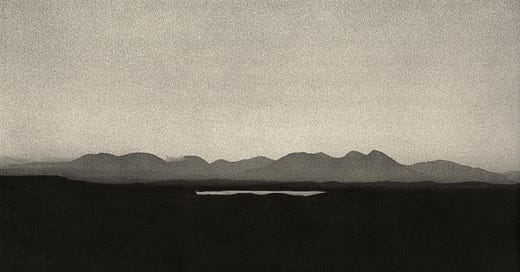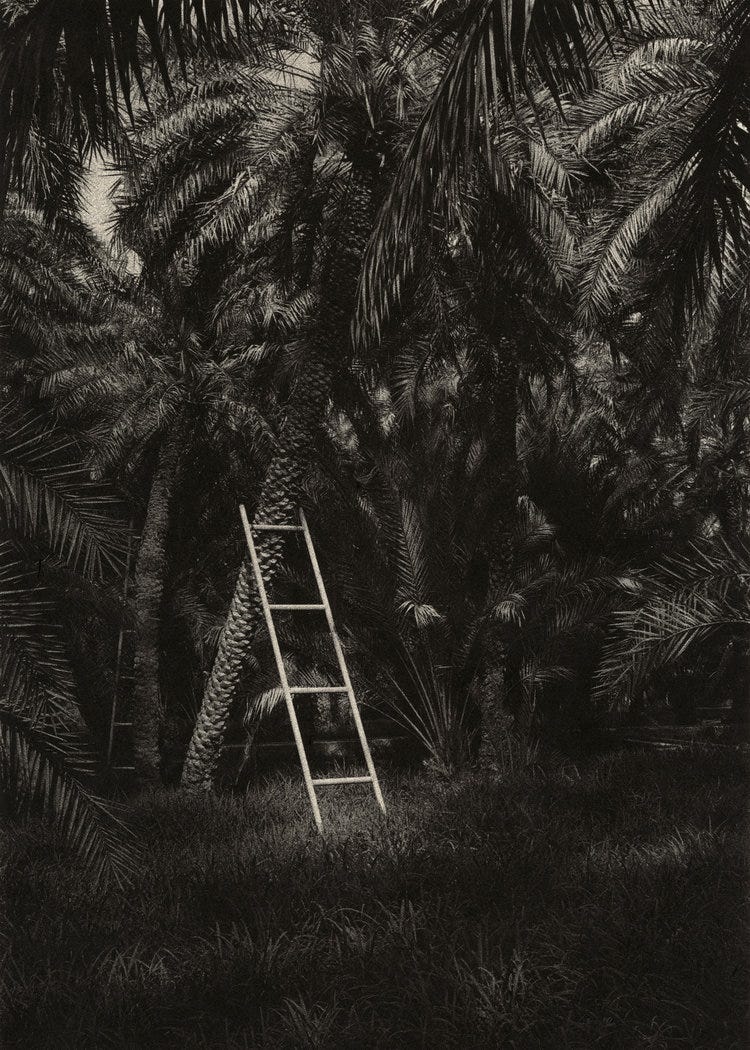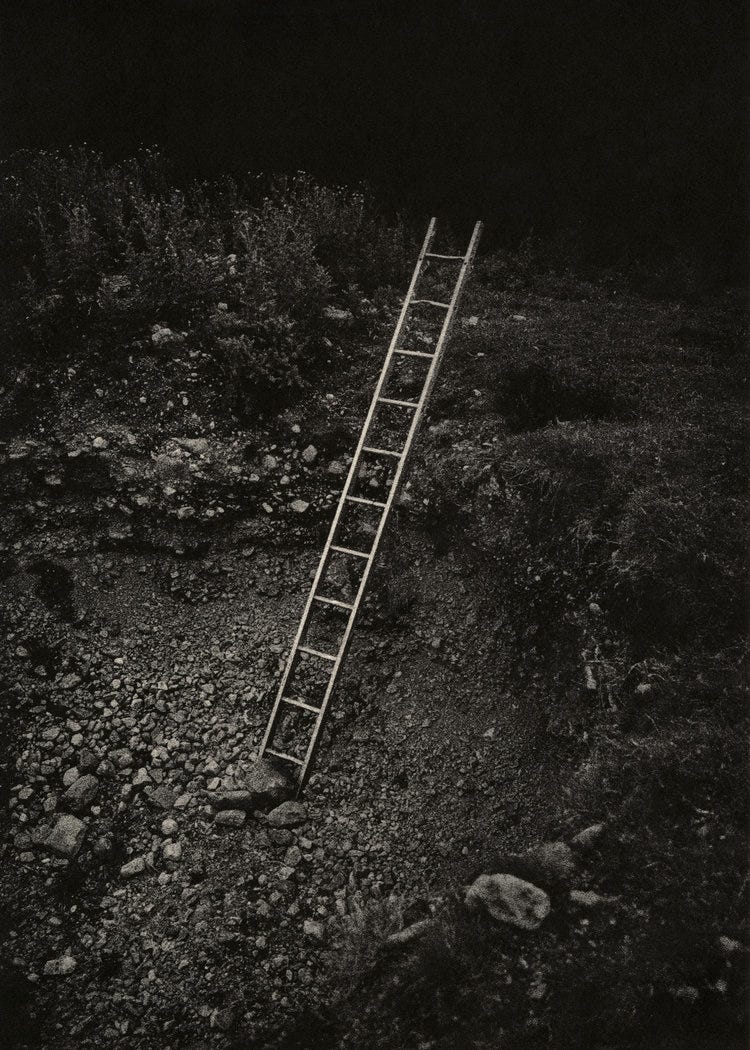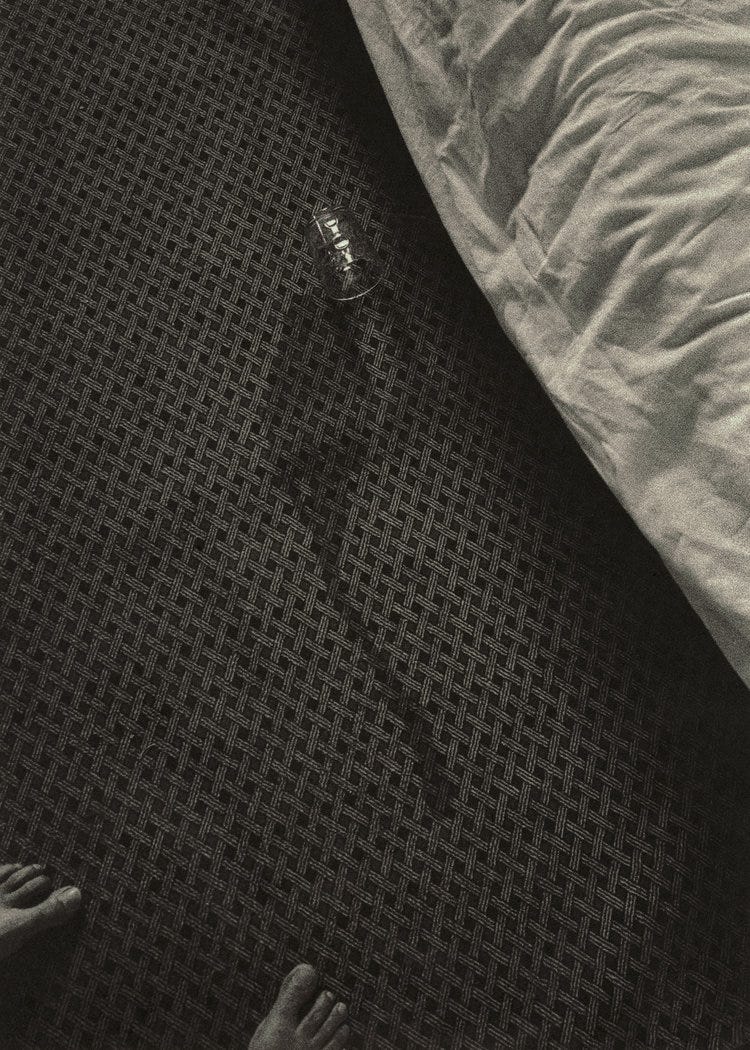No matter where you are, the horizon beckons.
Intoxicating notions of the future have a hold on us all, like a carrot on a string that is always just out of reach.
We think we know where we want to be; “over there” we point, in the general direction of whatever we most recently desire. Yet at this distance we only have a vague indication of what we actually mean. Being directionally correct is good enough for now.
Specifics, details, clear pathways don’t come into it. Not until you get much closer.
As photographers we are curious beings.
We look, we observe, we compose, and we capture. We temporarily attempt to order the chaos to reduce the anxiety of it all. We convince ourselves that we really do know what’s going on, but in reality we know very little.
If we’re honest, we’re just playing.
We play with light, we play with shadow. Sometimes we play with objects too.
Dominic Turner plays with ladders. He uses them as “a human intervention in a natural world”.
Our eyes begin ascending the rungs before we have the chance to understand the image we’re looking at. We have evolved to understand that it will be useful to know where all paths lead, and our subconscious is two steps ahead.
Turner challenges this by presenting us with ladders that lead nowhere. This can be rather unsettling for human beings that continually try to predict the future, but are these predictions not just another “human intervention in a natural world”?
Turner’s ladders steal the scene, but they are only interesting because of the scene. A photo of a ladder against a plain background wouldn’t have the same intrigue.
Looking at Turner’s work is like playing a game.
He gives just enough context to present a question, but not enough to offer an answer. This will either delight, or frustrate, depending on your perspective.
You’re forced to look, to figure out for yourself. Or to admit that perhaps you do not know what it means.
Turner’s images encourage contemplation, reflection, and (eventually) acceptance that there are things we cannot know.
His book, False Friends, is rich with layers. The images we see are scans from physical prints, awash with texture and grain. This attention to detail, this density of production, contrasts with the lack of intellectualising the work. You are free to see whatever you want to see in his images, and through acknowledging this you also accept that you will never see what others see.
In Turner’s own words, “There are those who would have us believe that the scariest of monsters dwell in the shadows & that we must be on permanent guard. I prefer to think that, while always striving to increase our understanding of the world, we can acknowledge and accept the things we do not know and bathe in the soothing powers of the shade.”
Links & Notes
View Dominic Turner’s work at https://www.dominicturner.ie








Thank you so much for sharing this. Turner’s work is incredible, and I loved your commentary. Kudos.